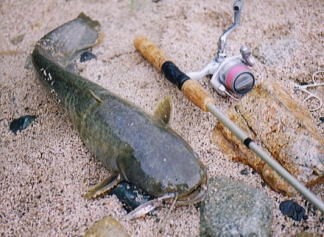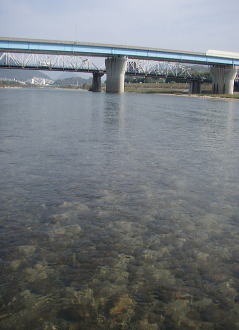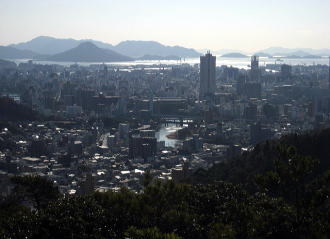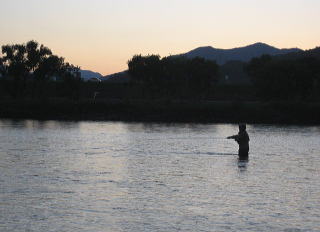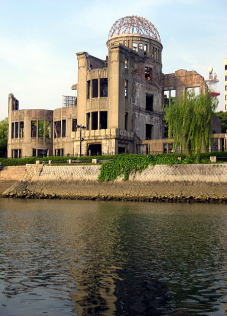Meanwhile there are large population of largemouth bass, carps, and catfish
here.
We even see oceanic species such as bream and sea-bass running up the river
in summer, and they normally decends down to the ocean with high water
that occurs as a result of the autumn typhoon.
The journey of Ohta river comes to the final phase, snaking through the
city center of Hiroshima, where over a million people live, to the inland
sea 'Setonaikai' dotted with numerous charming islands.
Through the town of 'Kabe', the river pours out of the valley into the
northern edge of Hiroshima city. Here the river spreads out as far across
as several hundred meters wide, hinting at the end of
In the typhoon season we often see roaring flood in these sections. But
on this sunny morning, we could spot a school of baby 'Ayu', a distant
kin of trout and the most prized freshwater table fish, in the peaceful
glide.
Along the way, Ohta river wisks by the historic site of A-bomb dome.
Half a century ago, the bomb exploded right over this dome, shattering
the entire Hiroshima city to pieces. The dome managed to stand still, because
it received the impact only vertically. In the aftermath, Ohta river was
full of dead and dying people gasping for air and water.
Today, Ohta river calmly flows by, as if forgiving everything, if not forgetting
it all.
- Back
With the water quality improvement of recent years, more frequent sightings
of returning Satukimasu are reported. Until the turn of the 20th centuty
the river was teeming with these sea-run Amego, that there even were professional
fishermen living off it.
Today, there we only see a hint of its past glory, but if we continue to
take better care of the river, we are sure to see more of returning Satukimasu
in the years to come.
 Ohta - lower section
Ohta - lower section